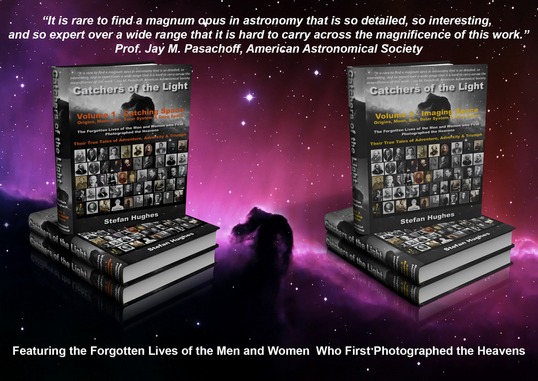'The Mirror Man'

Born: 10th September 1857; La Salle, Illinois, USA
Died: 12th August 1900; San Francisco, California, USA
During the latter part of his career James Edward Keeler used the 36-inch 'Crossley' Reflector at the Lick Observatory, California, USA to demonstrate the great potential large silvered mirrored reflectors had in the conduct of astrophysical research. The wonderful images produced by James Edward Keeler with this telescope are a great testament to his all too brief life.
James Edward Keeler (1857-1901) was one of the first professional astronomers to recognize the great contribution large silvered mirrored reflecting telescopes could make in man’s never ending quest to understand the nature, structure and origin of the universe, in which he is just a mere speck of dust in the enormity that surrounds him.
Astronomy in the nineteenth century was dominated by the refractor. It was the age when the great observatories of the world competed to own the telescope with the largest objective lens. In 1847 the largest refractor had an aperture of just 15-inches, with the observatories at Harvard College, in Cambridge, Massachusetts and the Imperial Russian Observatory at Pulkovo, near St. Petersburg each owning instruments that jointly held the then title of world’s biggest telescope.
The years that followed saw refractors of ever increasing size being constructed, with no observatory holding the title of ‘world’s largest’ for more than a few years at a time. By the end of the century there were six refractors with apertures of 30-inches or more: the 30-inch at Pulkovo (1885); the 30.3-inch at Nice (1886); the 31.5-inch at Potsdam (1899); the 32.7-inch at Meudon (1891); the 36-inch at Lick (1888); and the 40-inch at Yerkes (1897. Of these ‘Great Refractors’ only those at Pulkovo, Nice and Lick were briefly entitled to call itself the ‘world’s largest’; the two at Meudon and Potsdam never could.
Even the massive 40-inch at Yerkes briefly lost its seemingly ‘permanent’ crown in 1900, to the ill-fated 49.2-inch ‘Paris Exhibition’ telescope.
Unbeknown to the astronomical establishment of the time an alternative type of telescope - which they had completely ignored and frequently scorned, was preparing to hammer the ‘nails into the coffins’ of the precious but ageing dinosaurs which were their ‘Great Refractors’. These once fine instruments had dominated the world of astronomy for nearly three centuries, ever since the time of Galileo, but were now reluctant to move into a new world born of photography and one to be dominated by a new species of telescopes.
The alternative in question was the silvered mirrored reflecting telescope, which for the whole of the nineteenth century was largely left in the hands of a dedicated but nevertheless competent body of amateur astronomers. Even James Edward Keeler who was to become one of the reflector’s greatest supporters was until the last few years of his life totally ignorant of the capabilities of such telescopes.
In 1898, Keeler was appointed the Director of the Lick Observatory atop Mount Hamilton in California, with it came a telescope which was unknown, untried and mistrusted – a 36-inch silvered mirrored reflector, the gift of a carpet tycoon from Halifax, England, named Edward Crossley. In the two years which were left to him, James Edward Keeler, learnt to trust his new charge, to repair and modify it, and in doing so turned what was a ‘Trojan Horse’ into the beginnings of a new age - the era of the reflector.
With the 36-inch ‘Crossley’ reflector, James Edward Keeler and his assistant Charles Dillon Perrine (1867-1951) took a series of photographs of Deep Space Objects (DSOs), which even in the age of the CCD chip are still arguably some of the finest ever taken.
To read more on his life and work read the eBook chapter on James Edward Keeler or buy the Book 'Catchers of the Light'.

The 'Lagoon' Nebula in Sagittarius, James Edward Keeler, 36-inch reflector, 1899

Buy the eBook or Printed Book at the 'Catchers of the Light' shop.